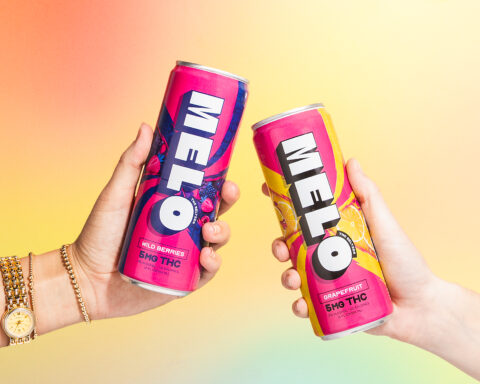Automotive Adages: Wisdom on Wheels
Automotive adages are more than just catchy phrases; they encapsulate the essence of driving, travel, and the profound impact automobiles have had on our lives.
These sayings often blend wit, wisdom, and a touch of nostalgia, reflecting the joy, freedom, and challenges that come with being behind the wheel.
Here are some timeless automotive adages that capture the spirit of the open road:
* “Life is like riding a bicycle. To keep your balance, you must keep moving.” – Albert Einstein: This quote beautifully illustrates the parallel between life and driving. Just as a bicycle requires constant motion to stay upright, we need to embrace change and keep progressing in life.
* **”The open road calls to all who dream of adventure.”** This evocative phrase speaks to the allure of travel and the sense of freedom that comes with exploring uncharted territories.
* **”A car is not just a machine; it’s a reflection of the person behind the wheel.”** This adage highlights the connection between our personalities and our choice of vehicles, suggesting that cars can be an extension of ourselves.
* “Some journeys are meant to be taken on foot. Some by bicycle. But the greatest adventures are often found on wheels.” This quote celebrates the unique experience of road travel, emphasizing its ability to take us on unforgettable journeys.
* **”The best car is the one that gets you where you want to go safely and comfortably.”** This pragmatic adage reminds us that practicality and functionality are essential considerations when choosing a vehicle.
These are just a few examples of the rich tapestry of automotive adages that have become ingrained in our cultural lexicon. These sayings serve as reminders of the enduring fascination with cars, the thrill of driving, and the transformative power of travel.
Automotive adages, those pithy sayings about cars, travel, and engineering, offer more than just clever wordplay. They encapsulate a deep-seated human fascination with the automobile – its ability to empower, to liberate, and to connect us to the open road.
One enduring theme in these adages is the allure of adventure. The car becomes a symbol of freedom, a passport to uncharted territory. It’s no accident that many sayings associate cars with journeys, exploration, and the thrill of the unknown.
“The world is a book and those who do not travel read only one page,” wrote St. Augustine, highlighting the transformative power of exploring new places.
This sentiment resonates deeply in our modern era, where road trips are often seen as a rite of passage, a chance to break free from routine and experience life on our own terms. Automotive adages capture this yearning for escape and discovery, reminding us that the open road beckons with endless possibilities.
Think about sayings like “Life is a journey, not a destination,” or “Every journey begins with a single step.” These phrases resonate because they recognize the inherent human desire to explore, to push boundaries, and to create memories along the way.
The car becomes the vessel for this adventure, a reliable companion on our personal quests. It allows us to forge connections with places and people we might never encounter otherwise, enriching our lives in ways that staying put simply cannot.
These automotive adages, then, are more than just clever sayings. They reflect our deep-seated human longing for adventure, the desire to break free from the ordinary and embark on journeys that shape who we are.
They remind us that the open road is calling, waiting to be explored, and that the greatest journeys often begin with a single turn of the key.
Cars have long been more than just modes of transportation; they’ve become symbols woven into the fabric of our culture, reflecting aspirations, fears, and desires. The adage “A car is a piece of art you can take for a drive” speaks to this profound connection. They embody freedom, adventure, and a sense of liberation from the everyday grind.
The open road, beckoning with the promise of escape, has been romanticized for decades. Car commercials often portray drivers leaving behind mundane routines, chasing horizons, and discovering new worlds. This desire to break free is deeply ingrained in us, and cars offer a tangible way to manifest it.
For some, a car represents a chance to shed societal expectations and embrace individuality. Cruising down the highway with the windows rolled down, music blasting, allows for self-expression and a temporary detachment from social norms.
The classic American muscle car, for example, embodies this rebellious spirit. Its powerful engine, sleek lines, and association with counterculture movements speak to a yearning for independence and a rejection of conformity.
Furthermore, cars can symbolize progress and the pursuit of a better life. Owning a car often signifies financial stability and upward mobility, allowing individuals to access new opportunities and expand their horizons.
The journey itself becomes symbolic of personal growth and self-discovery. Long road trips often serve as rites of passage, testing resilience, fostering independence, and forging memories that last a lifetime.
Automotive adages, like vintage cars themselves, hold a timeless appeal. They encapsulate experiences, values, and the enduring fascination with the automobile.
These sayings offer glimpses into our relationship with cars, travel, and the ingenuity of engineering. Whether it’s a humorous observation about road trips or a profound reflection on freedom, automotive adages resonate with those who understand the allure of the open road.
Here are some examples that illustrate this diverse wisdom:
-
“A car is a machine that goes ‘vroom’ and gets you in trouble faster than walking.”
-
This tongue-in-cheek adage highlights the inherent potential for mischief associated with automobiles.
-
“The journey of a thousand miles begins with a single step… and a full tank of gas.”
-
This adaptation of Lao Tzu’s classic saying emphasizes the practicalities of long-distance travel.
-
“You can have any car you want as long as it’s black.”
-
This iconic line from _Ferris Bueller’s Day Off_ captures the frustration of limited choices and the allure of a classic sports car.
-
“Life is like driving a car. Sometimes you get stuck in traffic.”
-
This relatable analogy reminds us that even on our journeys, we encounter obstacles and delays.
These sayings reflect the multifaceted nature of our relationship with cars. They entertain, inspire, and provide insights into the human condition as seen through the lens of automotive culture.
Engineering Marvels: Celebrating Automotive Innovation
“Engineering Marvels: Celebrating Automotive Innovation, From Steam to Supercars: A History in Words” delves into the captivating journey of automobile development, chronicling its evolution from rudimentary steam-powered contraptions to sleek, powerful supercars.
The book likely explores key milestones and technological breakthroughs that have shaped the automotive industry. Readers can expect insights into:
-
Early Pioneers: The birth of the automobile with inventors like Nicolas-Joseph Cugnot, Karl Benz, and Gottlieb Daimler, and their groundbreaking contributions.
-
The Rise of Mass Production: The impact of Henry Ford’s assembly line and the democratization of car ownership.
-
Technological Advancements: The evolution of engines (from combustion to electric), transmission systems, safety features, and materials science.
-
Iconic Models: Profiles of legendary vehicles that have become cultural icons, such as the Model T Ford, the Volkswagen Beetle, and the Ferrari 250 GTO.
-
Design Aesthetics: The evolution of automotive design trends, from Art Deco to modern minimalism, highlighting the role of aesthetics in shaping perception.
Beyond technical details, “Engineering Marvels” likely examines the social, cultural, and environmental impact of the automobile. It might explore:
-
Urbanization and Mobility: The profound influence of cars on city planning, transportation infrastructure, and daily life.
-
Environmental Concerns: The debate surrounding emissions, fuel efficiency, and the search for sustainable alternatives.
-
The Future of Driving: Speculations and predictions about autonomous vehicles, shared mobility, and the potential transformation of transportation in the 21st century.
“Engineering Marvels: Celebrating Automotive Innovation” promises a comprehensive and engaging exploration of the automobile’s fascinating history, showcasing its impact on our world and our future.
Engineering marvels are the embodiment of human ingenuity, pushing the boundaries of what’s possible and transforming our world. In the realm of automobiles, these feats of engineering have revolutionized transportation, reshaping societies and connecting people in unprecedented ways.
From the humble beginnings of the first horseless carriage to the sleek, self-driving vehicles of tomorrow, automotive innovation has been a continuous journey of progress. Early pioneers like Henry Ford, with his vision of mass production and affordability, made cars accessible to the masses, changing the landscape of urban life.
The invention of the internal combustion engine by Karl Benz and Gottlieb Daimler marked a pivotal moment, propelling automobiles into the mainstream. Subsequent innovations like electric starters, power steering, and air conditioning further enhanced convenience and comfort, making cars more appealing than ever.
Today’s automotive industry is driven by an insatiable thirst for progress. Engineers are constantly striving to develop lighter, more fuel-efficient vehicles that minimize environmental impact. Hybrid and electric technologies are gaining traction, paving the way for a cleaner, more sustainable future.
Autonomous driving, once a futuristic concept, is now rapidly approaching reality. Self-driving cars promise to revolutionize transportation, enhancing safety, reducing congestion, and opening up new possibilities for mobility.
Visionaries in the automotive world have left an indelible mark on this industry. Henry Ford’s famous quote, “If there is any one secret that I might divulge, it is never to be afraid of competition,” epitomizes his belief in pushing boundaries and embracing innovation.
Elon Musk, CEO of Tesla, has become a champion of electric vehicles, envisioning a future where transportation is powered by sustainable energy. His bold pronouncements and audacious goals have propelled the industry forward.
These quotes and the innovations they inspire serve as a testament to the transformative power of engineering ingenuity. Automotive marvels continue to shape our world, connecting us to each other and driving progress in countless ways.
Engineering marvels define the automotive world, showcasing a harmonious blend of technology and design that continues to captivate and inspire. From the early days of steam-powered contraptions to the sleek electric vehicles of today, the journey of automotive innovation is a testament to human ingenuity.
The intersection of technology and design in automobiles has resulted in breathtaking feats of engineering. Consider the internal combustion engine, a marvel of mechanical precision that powers millions of vehicles worldwide. Its evolution from rudimentary designs to sophisticated powerplants is a testament to the tireless pursuit of efficiency and performance.
Beyond the engine, advancements in materials science have revolutionized automobile design. Lightweight composites and high-strength steels allow for lighter yet stronger vehicles, enhancing fuel efficiency and handling.
Safety technology has also emerged as a cornerstone of automotive innovation. Anti-lock braking systems (ABS), electronic stability control (ESC), and advanced airbags are just a few examples of how engineering ingenuity is prioritizing passenger safety.
The pursuit of autonomous driving represents another frontier in automotive innovation. Self-driving cars, powered by sophisticated sensors, artificial intelligence, and complex algorithms, promise to transform the way we travel, enhancing safety, efficiency, and accessibility.
Design plays a pivotal role in shaping the automotive experience. From aerodynamic contours that reduce drag to ergonomic interiors that prioritize comfort, aesthetics and functionality are intricately intertwined.
The future of automotive engineering holds immense potential. Electrification, connectivity, and sustainable materials will continue to drive innovation, leading to vehicles that are not only more efficient and eco-friendly but also smarter and more personalized.
Automotive Culture: More Than Just Machines
Automotive culture extends far beyond the mechanics and engineering marvels of cars themselves.
It’s a rich tapestry woven from art, literature, and film, reflecting our deep-seated fascination with these machines that have revolutionized our lives.
Cars have become potent symbols, embodying freedom, rebellion, status, and even dreams of escape.
In art, the automobile has taken on diverse forms.
- Early 20th-century painters captured the sleek lines and dynamism of the horseless carriage, celebrating its modernity.
- Surrealists like Salvador Dalí used cars to explore themes of dreams, desire, and the subconscious.
- Contemporary artists continue to engage with automobiles, questioning their impact on the environment and society.
Literature has long explored the relationship between humans and cars.
- Classic novels like “The Great Gatsby” and “On the Road” use cars as metaphors for wealth, escapism, and the pursuit of the American dream.
- Hard-boiled detective stories often feature automobiles as essential tools for crime-solving or as symbols of corruption and danger.
- Modern writers continue to grapple with the ethical dilemmas and social implications of car culture.
Film has arguably made the most powerful use of cars, transforming them into cinematic icons.
- Classic film noir films used cars as symbols of danger and seduction.
- Action films rely on high-octane car chases to create thrills and suspense.
- Sci-fi movies envision futuristic vehicles that push the boundaries of imagination.
From their earliest days, automobiles have captured our imaginations and inspired countless works of art, literature, and film.
They are more than just machines; they are reflections of ourselves, our desires, our fears, and our dreams.
Automotive culture extends far beyond the mechanics of engines and the design of vehicles. Cars are more than just machines; they are cultural icons that reflect societal values, aspirations, and anxieties. They embody our desires for freedom, status, and technological advancement, while also mirroring our concerns about environmental impact, social inequality, and the changing nature of work.
Throughout history, cars have served as powerful symbols. In the early 20th century, they represented modernity, progress, and a break from tradition. The “horseless carriage” symbolized liberation from horse-drawn transportation and ushered in an era of personal mobility and individual empowerment. This freedom resonated deeply with individuals seeking autonomy and escape from societal constraints.
The post-World War II boom further solidified the car’s cultural significance. Owning a car became synonymous with prosperity and success, fueling the rise of suburban sprawl and the American dream of home ownership. Cars like the Chevrolet Bel Air and Ford Thunderbird embodied this aspirational lifestyle, becoming objects of desire for their sleek design, powerful engines, and status symbols.
As environmental concerns grew in the late 20th century, cars became entangled in debates about sustainability and responsible consumption. The oil crisis of the 1970s highlighted the dependence on fossil fuels and prompted a search for alternative fuel sources and more efficient vehicles. This period also saw the rise of environmental activism and calls for stricter regulations on automobile emissions.
In the 21st century, cars are undergoing another transformation driven by technological innovation. The emergence of electric vehicles, autonomous driving systems, and connected car technology promises a future where transportation is more sustainable, efficient, and personalized. These advancements raise new questions about the role of cars in society, their impact on urban landscapes, and the ethical implications of artificial intelligence in transportation.
Beyond their practical functions, cars continue to play a significant role in popular culture. They appear prominently in films, television shows, and music, often serving as metaphors for freedom, rebellion, or personal identity. The classic car scene thrives on nostalgia and a love for automotive history, while customized vehicles reflect individual expression and creativity.
Ultimately, automotive culture is a complex and multifaceted tapestry woven from technological advancements, social norms, economic realities, and cultural values. Cars are more than just machines; they are reflections of who we are, what we value, and where we are headed as a society.
Automotive culture transcends the realm of mere machines; it delves into the profound human connection we forge with automobiles. It’s a tapestry woven with threads of emotion, history, identity, and aspiration.
Cars are more than just modes of transportation; they become extensions of ourselves, reflecting our personalities, values, and dreams. A sleek sports car might symbolize power and freedom, while a rugged truck speaks to practicality and resilience.
Throughout history, automobiles have played pivotal roles in shaping our societies. They have enabled exploration, fostered economic growth, and transformed the landscape. The open road has beckoned adventurers, families, and dreamers alike, promising new horizons and endless possibilities.
Automotive culture is deeply rooted in shared experiences. Road trips evoke nostalgia, bonding memories with loved ones, while car shows celebrate mechanical artistry and engineering ingenuity.
Collectible cars hold a special allure, representing bygone eras and evoking a sense of history. Owning a classic automobile can be a passion project, a labor of love restoring these vintage gems to their former glory.
Racing embodies the adrenaline-fueled spirit of automotive culture. The roar of engines, the thrill of speed, and the competitive drive push the boundaries of both machine and human capabilities.
Beyond the tangible aspects, automotive culture thrives on a vibrant community. Enthusiasts gather online and in person to share their passion, exchange knowledge, and celebrate all things automobiles.
From classic car cruises to modern-day motorsports events, automotive culture continues to captivate and inspire generations, reminding us that cars are more than just machines; they are symbols of freedom, progress, and the enduring human spirit.
- Happiness Quotes To Brighten Your Mood And Life - April 13, 2025
- Moving On Quotes For Healing, Growth, And Letting Go - April 13, 2025
- Funny Quotes To Bring Laughter And Joy To Your Day - April 13, 2025



